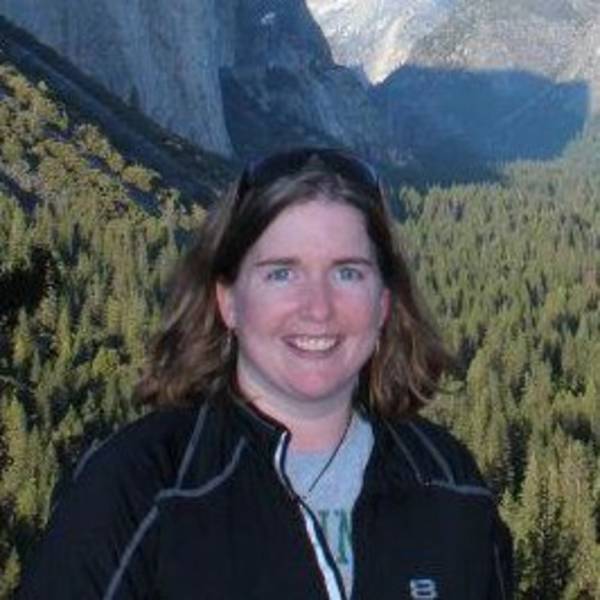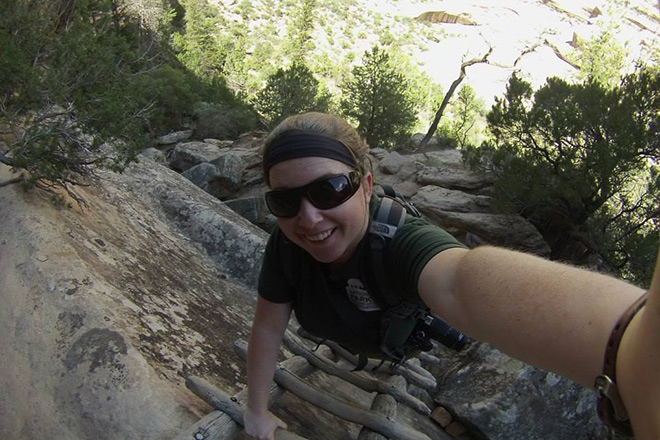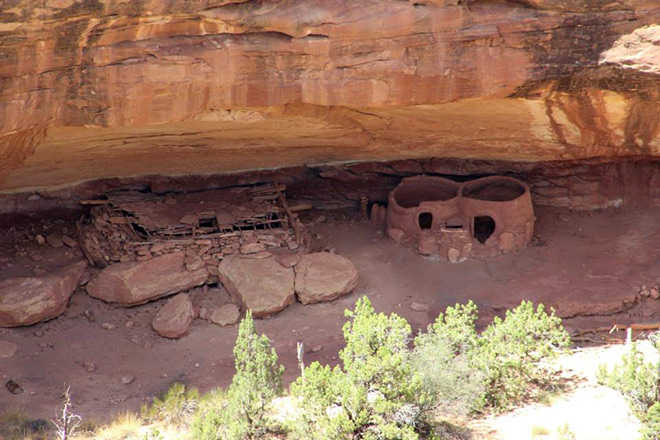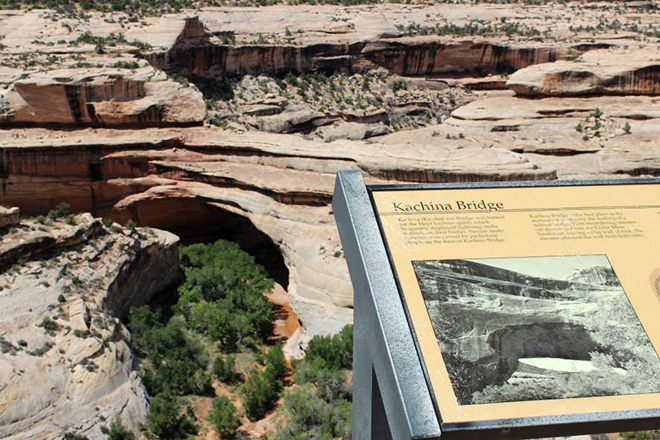As parks go, Natural Bridges has some serious bragging rights: It’s Utah’s first national park site, the first International Dark-Sky Park in the world, and one of the very darkest places for stargazing in the country. Designated in 1908 by President Theodore Roosevelt, this is the only place where you can find three natural bridges in such close proximity, including the second-largest natural bridge in the world.
With only 90,000 visitors a year, it is one of the lesser-known parks in Utah, despite all it has to offer.
The three primary attractions are the bridges themselves, with easily accessible overlooks to great views. Kachina is the youngest of the three bridges, followed by Sipapu, and Owachomo. Kachina’s walls are thick and massive; over time, erosion wears away the sandstone until the bridges become more delicate, like Owachomo, and eventually collapse.
Fondly called “canyon country’s oasis” by Superintendent Jim Dougan, this park is secluded, and the canyon floor offers something you don’t often see in the desert, full-grown trees with shade.
Things to Do
- When you arrive, hop into the visitor center and speak with the rangers about weather conditions (to avoid flash flooding and snowy road conditions in the canyon) and special activities, like astronomy programs.
- Drive the park’s one paved road, Bridge View Drive, for a nine-mile, one-way route to stunning overlooks, the three natural bridges, and Horsecollar Ruins, an Ancestral Puebloan cliff dwelling. Bring binoculars and zoom lenses to get a better view of the cliff dwellings at the base of the canyon wall.
- Take a hike! Although 90% of visitors stay on the road, the canyon floor offers sanctuary, quiet, and amazing views of the bridges.
- From Bridge View Drive, use the stairs, ladders, and handrails for a magnificent hike to the base of Sipapu and Kachina Bridges. You can turn back here for a challenging shorter hike, or you can spend the day following the loop around the canyon floor to all three bridges and Horsecollar Ruins.
- Camping? Stay at the park! Sleep under one of the darkest skies in America and wake up on the canyon’s edge. It takes a little time to get out to the campsite, but the gorgeous drive is worth it.
- Important to know: Food, gas, and lodging (other than the campground) are not available in Natural Bridges. It is highly recommended that you pack your meals and travel with a full tank of gas since the nearest services are an hour away. There is also no cell service in this area, so advanced preparation is essential to enjoy this wonderful remote and secluded oasis.
Did You Know? Natural Bridges vs. Arches
Natural bridges are formed by running or moving water (such as rivers) and can be found in deep canyons and along river beds. Arches are formed by rain, seeping moisture, and frost and are mostly found along skylines.
What’s in a Name?
Government surveyor William Douglas gave the three bridges their current names in 1908.
- Kachinas are spirit gods of the Ancestral Puebloans and are often represented as dancers. Douglas named the formation after he found petroglyphs and pictographs depicting dancing figures at the base of the bridge. This bridge has also been called Senator, as well as Caroline, after a local cowboy’s mother.
- Sipapu is a Hopi term for the opening between worlds. Other names included President and Augusta, after explorer Horace Long’s wife.
- Owachomo is a Hopi term that means “rock mound,” referring to the rock formation on top of the east end of the bridge. Other names included Edwin, Little Bridge, and Congressman.
This story is part of NPCA’s biweekly Desert Getaway series. Read more stories in the series for tips on visiting other desert parks.
About the author
-
 Megan Cantrell Former Social Media Manager
Megan Cantrell Former Social Media ManagerMegan Cantrell worked at National Parks Conservation Association for 10 years, much of that time shepherding NPCA’s social media program.
-
General
-
- NPCA Region:
- Southwest


